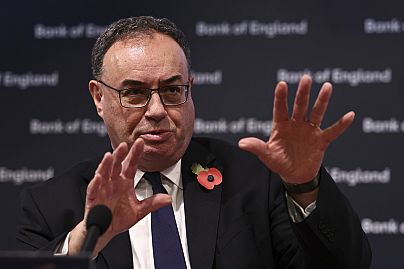Crude oil prices have dropped to their lowest since late July, on the back of weak economic data from China and slowing global demand.
Oil prices fell to almost four-month lows on Wednesday afternoon, impacted by disappointing economic data from China indicating weaker demand. Slowing concerns of a wider Middle Eastern conflict have also contributed to this drop.
Brent crude oil prices fell by 0.71% to $81.03 (€75.89) a barrel, while West Texas Intermediate (WTI) prices dropped 0.74% to $76.80 a barrel. This marked both Brent and WTI’s lowest point since July.
China saw exports drop 6.4% year-on-year in October, down from 6.2% in September. This figure was another significant plunge from expectations of a -3.3% decline and highlights the sixth month in a row of falling exports.
Piero Cingari, staff writer at financial news outlet Benzinga, noted that concerns about a global decline in crude oil demand had resurfaced in recent weeks, which he said were “due to disappointing Chinese economic data, signs of a weakening US labour market last month and the looming possibility of a recession in Europe”.
On the supply side, Cingari said that worries about potential disruptions in the Middle East have eased, as the conflict between Israel and Hamas appears to be contained in the Gaza Strip, reducing fears of a broader regional conflict.
“For oil prices to experience a significant increase from their current levels, two key factors must come into play: robust stimulus measures in China and a resurgence of concerns about supply among major OPEC players,” he added.
Weaker global demand undermines output cuts
The US Energy Information Administration (EIA) has also adjusted its petroleum consumption forecast, which now reflects a fall of 300,000 barrels per day. This is a sharp turnaround from the EIA’s earlier forecast of a rise of 100,000 barrels a day.
Earlier gains in oil prices this week were driven by Saudi Arabia and Russia continuing to stick to their voluntary output reductions. Russia is likely to reduce output by 300,000 barrels a day until the end of the year, whereas Saudi Arabia will cut 1 million barrels a day in December.
However, weaker global demand has gone a long way in undermining these spikes by mid-week, as more economic data lands. Demand has been further dampened by the possibility of more hikes in interest rates by the end of the year.
On Wednesday morning, Bank of England governor Andrew Bailey said that monetary policy would continue to be tight for the foreseeable future, to help bring inflation back to his 2% target.
Speaking at the Central Bank of Ireland Financial Systems Conference, Bailey also pointed out that it was “really too early to be talking about cutting rates”.
He added that there were still upside risks to monetary policy arising from the Middle Eastern conflict.
Investors are also eyeing the US Federal Chair Jerome Powell’s speech, due later on Wednesday, for more hints on future monetary policy. Powell has already signalled that the best approach at the moment may be to hold rates steady until new labour market and inflation data comes in.












